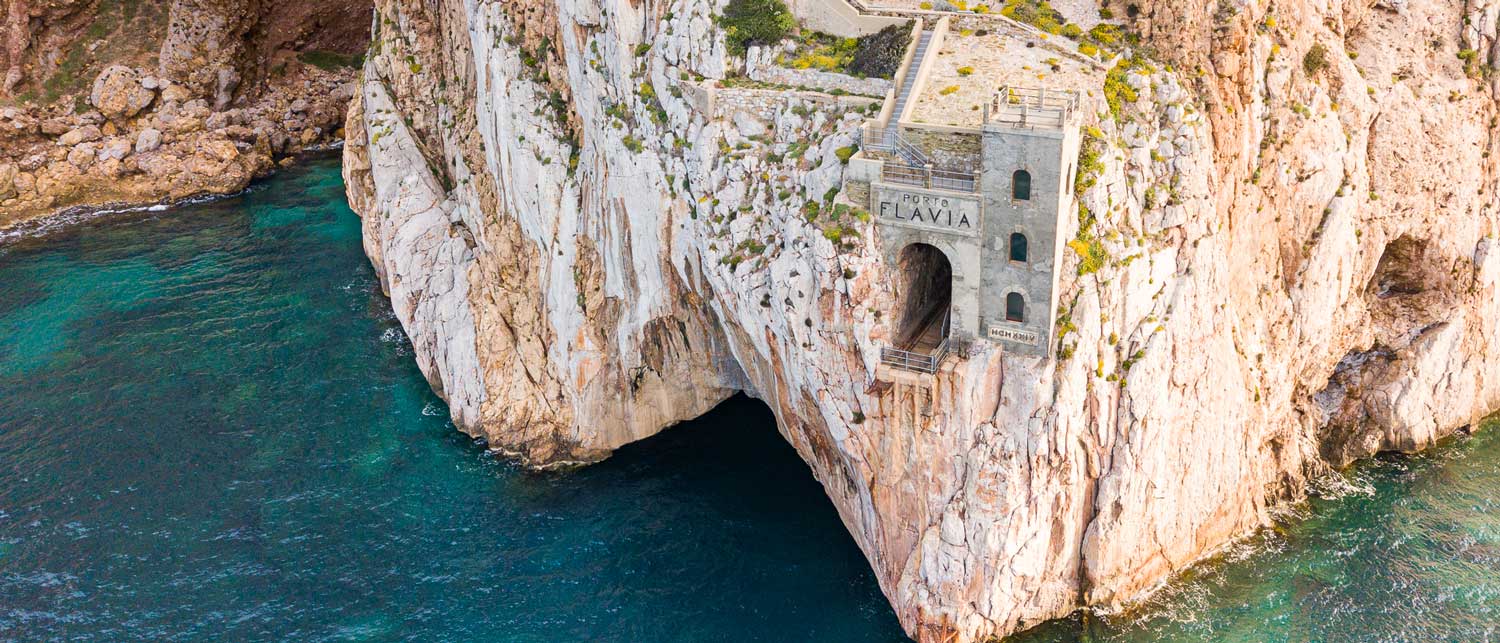
Porto Flavia
The engineering jewel set in the cliffs of Masua
Among the most extraordinary examples of industrial architecture of the twentieth century, it was built between 1922 and 1924. This ingenious transport system revolutionized the extraction and trade of minerals.
The complex is almost entirely underground, inside the Cambrian limestone.
The main structure consists of a tunnel about 600 meters long, dug directly into the rock, which ends on a cliff with a spectacular view of the Pan di Zucchero stack, a 132-meter-high natural monument shaped over millions of years by geological events, wind and the sea.
Designed by engineer Cesare Vecelli, Porto Flavia represented unprecedented technological progress: two overlapping tunnels connected to immense silos allowed merchant ships to be loaded directly, eliminating the need to transport minerals with smaller boats to the port of Carloforte.
In the upper section, the minerals coming from the plants were unloaded into the large silos from above.
When weather conditions allowed, the steamers would dock under the mobile arm that was an extension of a conveyor belt that passed under the silos, collecting and transferring the mineral directly into the holds of the steamer.
The innovation drastically reduced transport times and costs, making Porto Flavia a cutting-edge model for the entire mining industry. The name “Porto Flavia”, which stands out
on the entrance to the medieval-style tower overlooking the sea and on the entrance to the tunnel where the wagons that transported the mineral to the silos entered, was chosen by Vecelli himself as a tribute to his daughter.
Suspended between sky and sea, Porto Flavia is today a symbol of the human ability to blend technique and natural landscape. Its history is intertwined with that of the Masua mine. In its heyday, between the 19th and 20th centuries, it employed over 700 workers, but in the 1930s it began a slow decline and then had a second golden age between the 1980s and 1990s until it closed. Today, in addition to the guided tour of the mining port, it is possible to explore the village of Punta Cortis, a fascinating settlement built for the mine workers, with the school, hospital and church still visible. The experience is completed with a stop at the Mining Machinery Museum, which houses dozens of historic equipment, and with a moment of relaxation on the beach of Porto Flavia, an enchanting cove bathed by crystalline waters and surrounded by the greenery of the pine forest, where the industrial past and natural beauty blend together.
Media
Let's discover something more
Exploring resources
Instruments and in-depth information
Useful resources
Connected places
External resources
Back to discover
